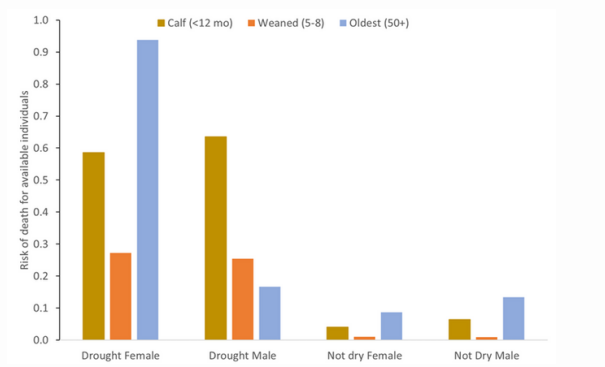Amboseli.ke was founded by a dedicated group of conservationists based in Kajiado and Nairobi, driven by an urgent mission—to raise awareness about the fragile state of the Amboseli ecosystem and promote impactful conservation efforts. This initiative aims to showcase the raw beauty of Amboseli National Park while highlighting the existential threats it faces. Amboseli NP is at a critical crossroads, and without immediate, large-scale conservation interventions, the ecosystem as we know it may collapse.
Amboseli at a Crossroads: A Threatened Ecosystem
Amboseli’s significance stretches far beyond its stunning landscapes and iconic elephant herds. The park forms the heart of a vast 10,000-square-kilometer ecosystem, intricately linked with the surrounding savannas, seasonal wetlands, and migratory corridors used by wildlife and pastoral communities for millennia. However, this delicate balance is now on the brink of collapse.
The Gravest Threat: Fragmentation and Habitat Loss
The 2013 Amboseli Conservation Program (ACP) Report warned of the single greatest threat to Amboseli’s survival: fragmentation of the ecosystem and the collapse of migratory wildlife populations. The once-open rangelands that allowed for seasonal movement of wildlife and Maasai livestock are increasingly being fenced, subdivided, and converted into settlements and farms. This fragmentation is rapidly reducing the ability of Amboseli’s wildlife to migrate, access resources, and recover from environmental stressors like droughts.
Why Migrations Matter
For millennia, Amboseli’s zebras, wildebeest, elephants, and livestock have relied on migration to survive harsh dry seasons and recover during times of abundance. The movement of large herbivores across Amboseli’s vast landscape has also played a vital role in maintaining healthy savanna ecosystems—preventing overgrazing, regenerating vegetation, and sustaining predator-prey dynamics. The growing barriers to movement are now disrupting these natural cycles, placing Amboseli’s wildlife at severe risk of population collapse.
Climate Change and Increasing Droughts
Climate change is further compounding Amboseli’s vulnerabilities. 2023 was another devastating year of drought, following prolonged dry conditions in 2022. The start of 2023 saw continued drought across Amboseli, leading to massive wildlife and livestock losses. The rains finally arrived in March and April, bringing temporary relief, but these extreme weather events will only become more frequent and intense in the coming years.
As noted in the Amboseli Trust for Elephants – Annual Report 2023, the risk of death for elephants in Amboseli is quite high in drought years compared to non-drought years as shown in the chart below;

Droughts threaten Amboseli’s ecosystem in several ways:
- Water Scarcity: Amboseli’s wetlands and swamps, crucial for wildlife and livestock, dry up faster during prolonged droughts.
- Wildlife Starvation: Herbivores struggle to find adequate grazing, leading to mass die-offs.
- Human-Wildlife Conflict: As water and pasture become scarce, wildlife increasingly moves into human-occupied areas, leading to conflict with communities.
A Shifting Landscape: Human Expansion & Changing Land Use
The Amboseli ecosystem has long depended on coexistence between wildlife and Maasai pastoralists, who historically maintained sustainable grazing patterns. However, rapid land subdivision, commercial agriculture, and land sales are changing the landscape.
- Increased Fencing: Wildlife corridors are disappearing as more land is fenced off for private ownership.
- Encroachment into Wildlife Areas: Expanding settlements push into crucial grazing lands and water sources.
- Rise of Commercial Farming: Large-scale irrigation projects deplete Amboseli’s fragile water resources.
Without urgent interventions, Amboseli’s open landscapes could be lost within the next two decades, leading to irreversible wildlife declines and ecosystem degradation.
What Can Be Done? The Urgency for Conservation Action
Amboseli.ke exists to raise awareness, promote conservation efforts, and mobilize action before it’s too late. The following key strategies must be prioritized to protect Amboseli’s future:
1. Protecting and Restoring Wildlife Corridors
- Work with local landowners and communities to maintain open wildlife corridors.
- Promote land leasing programs that pay landowners to keep land unfenced and open for migration.
- Implement wildlife-friendly fencing solutions where necessary.
2. Addressing Climate Change Resilience
- Improve water conservation efforts, including the protection of Amboseli’s wetlands.
- Promote sustainable grazing practices among local pastoralists.
- Support climate adaptation programs for local communities and wildlife.
3. Strengthening Conservation Policies
- Work with the Kenyan government and conservation NGOs to enforce stronger land-use policies.
- Support initiatives that empower Maasai communities to continue their role as conservation stewards.
- Increase funding for anti-poaching and wildlife monitoring programs.
4. Raising Public Awareness and Community Engagement
- Conduct educational programs for local communities, tourists, and policymakers on conservation challenges.
- Encourage responsible tourism through eco-friendly safari operations.
- Build partnerships with international conservation groups to amplify Amboseli’s conservation needs.
The Future of Amboseli is in Our Hands
Amboseli is one of Africa’s last great wildlife refuges, but its future is uncertain. With increasing human expansion, habitat destruction, and climate change, the Amboseli ecosystem is in grave danger of collapsing. However, through dedicated conservation efforts, sustainable land-use planning, and community-led initiatives, we still have a chance to preserve Amboseli’s incredible biodiversity.
Amboseli.ke stands as a beacon for conservation, advocacy, and action. By raising awareness, supporting conservation programs, and making responsible choices, we can all play a role in ensuring Amboseli thrives for generations to come.
